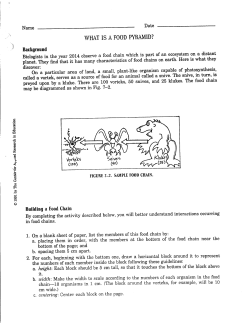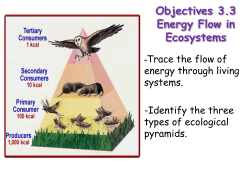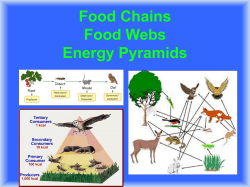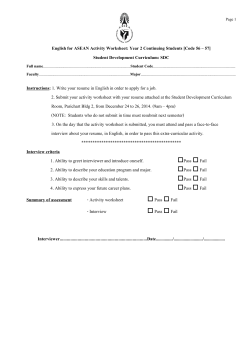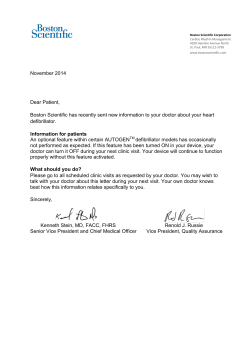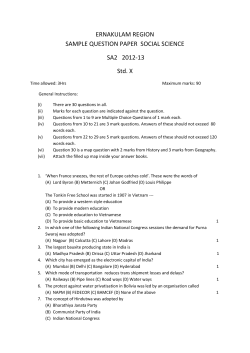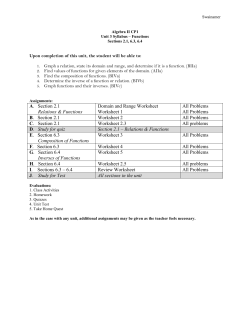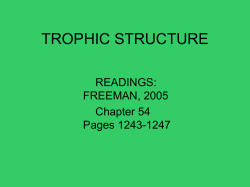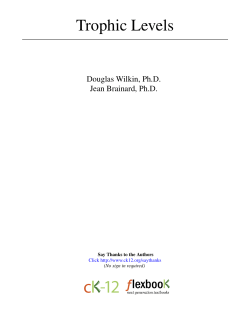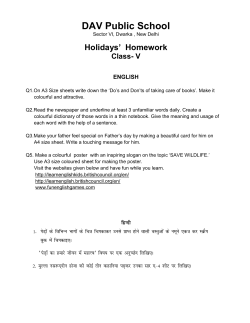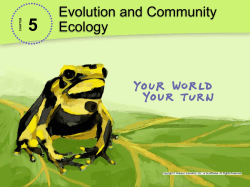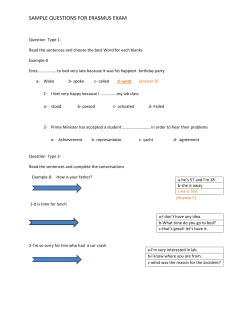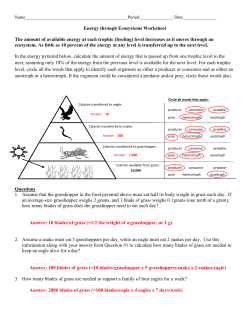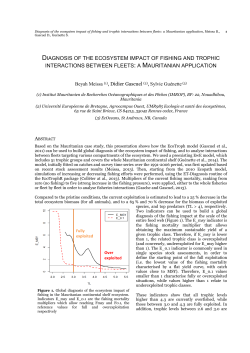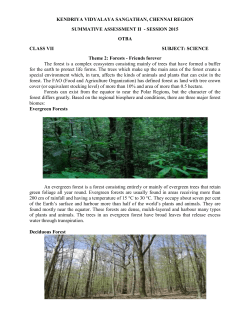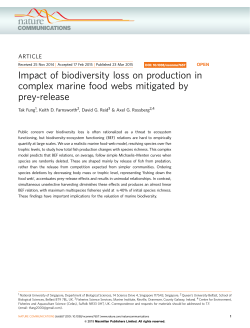
WORKSHEET I- HOW DO ORGANISMS REPRODUCE (CLASS X
WORKSHEET I- HOW DO ORGANISMS REPRODUCE (CLASS X) # Very Short Answers 1. Define Reproduction? 2. Where does fertilization occur in human females? 3. Name the unicellular and multicellular organisms which reproduce by budding? 4. Through which part of the ovule the pollen tube enters it? 5. Name one animal which regenerates from its cut body parts? 6. Write the name of male sex hormones? 7. Name the disease caused by HIV? 8. Name one sexually transmitted disease for which no cure has been found so far? 9. Name the reproductive parts of a flower? 10. Name two flowers of flowering plants which are unisexual? 11. What is a hermaphrodite? 12. What is the importance of variation? 13. What is the advantage of sexual reproduction over asexual reproduction? 14. What is the importance of DNA copying in reproduction? 15. Name one IUCD? 16. Name two plants which can be propagated by layering? 17. Name two sexually transmitted diseases? # Short Answers 1. Distinguish between binary fission and multiple mission 2. Write two functions of human ovary 3. How do oral contraceptives inhibit pregnancy 4. What are the limitations of asexual reproduction 5. What are the advantages of vegetative propagation 6. Define pollination. What are the different types of pollination? 7. Define fertilization. Explain internal and external fertilization 8. Draw the diagram of binary fission in amoeba 9. Why does menstruation occur 10. What is the function of flower? Name the non reproductive parts of a flower # Value Based Question 1) Rita‟s mother bought oranges from the market. She left them on a humid shelf. Next day she observed greenish black patches on some of the oranges. a) What was the probable cause of the patches? b) How did the oranges get infested? c) What precautions should be taken to avoid this? WORKSHEET II- HEREDITY AND EVOLUTION (CLASS X) # Very Short Answers 1. 2. 3. 4. 5. Who is known as the “father of genetics”? What is the information source for making protein in a cell? What is a gene? Give an example of a human chromosome which is not paired? Which organism has a simple body design but is still surviving and inhabits the most inhospitable habitats? # Short Answers 1. Explain two factors on which the evolutionary process depends? 2. Taking the example of color of seed explain the concept of dominant and recessive traits. 3. Which organism is capable of changing sex because it is not genetically determined? 4. Give two causes of variations? 5. What is Micro Evolution? 6. What is Speciation? What are the processes that lead to origin of a new species? 7. Birds are closely to reptiles. Explain. # Long Answers 1. How do proteins control characteristics which are inherited? Explain with an example of tallness as a characteristic. 2. Discuss the characters of pea plants studied by Mendel? 3. Discuss the two conclusions of Mendel‟s experiment of cross breeding between two pea plants with two pairs of contrasting characters? 4. What is a Genetic drift? Explain it with reference to beetle population. 5. Illustrate with an example that “acquired traits cannot be inherited”? 6. Human beings are not pinnacle of evolution. Explain. 7. With help of a flow chart explain how sex is determined genetically in human beings? 8. What are fossils? How are they formed? Explain two components for estimating the age of fossils? 9. How have humans generated different vegetables from a common ancestral design? Explain this with the help of a suitable example. 10. What are the tools for studying human evolution? How are human beings an accident of evolution? # Value Based Question 1. Rohini who is 4 months pregnant went to the doctor for an ultrasound. She asked the doctor after the ultrasound whether the sex of the baby can be known by this test. a) What will be the reply of the doctor? b) If he says yes, should he tell the couple about the sex of the baby? c) Why should the doctor not disclose the sex of the baby to the parents? WORKSHEET III- OUR ENVIRONMENT (CLASS X) 1. What is biological magnification? Will the levels of this magnification be different at different levels of the ecosystem? 2. Distinguish between biodegradable and non-biodegradable substances. List two effects of each of them on the environment. 3. „Damage to ozone layer is a cause of concern‟. Justify this statement. Suggest any two steps to limit this damage. 4. What is „ten percent law‟? Explain with an example how energy flows into different trophic levels. 5. What are „Trophic Levels‟? Give an example of a food chain and state the different trophic levels in it. 6. What is the role of decomposers in an ecosystem? 7. Rearrange the following according to their ascending trophic level in a food chainHawk, Grass, Snake, Rabbit 8. In the following food chain 20J of energy was available to the hawks. How much would have been present in the plants? 9. Give the technical term for the graphic representation of trophic levels in the food chain? 10. The use of DDT is discouraged since the chemical is found in human body. How does this chemical enter our body? 11. Differentiate between food chain and food web? 12. What gives rise to environmental problems? How can they be reduced? 13. How would you dispose the following wastes(i) Domestic wastes like vegetable peels (ii) Industrial wastes like metallic cans (iii) Plastic material 14. Mention a food chain in a fresh water pond. Mention the food of each trophic level in this food chain. 15. „Vegetarian food habits can sustain a large number of people‟. Justify the statement in terms of food chain. 16. Rahul was bitten by a snake in his farm last year. His father called a snake charmer and asked him to catch as many snakes as possible. After a year, the family is facing the problem of rats that are destroying their crops. a) What is the relation between catching of snakes and destruction of crops by the rats? b) What is meant by trophic level? WORKSHEET IV- MANAGEMENT OF NATURAL RESOURCES (CLASS X) # Very Short Answers 1. 2. 3. 4. 5. 6. 7. 8. What is Coliform? Name the measurable factor which is used to check the quality of water. Name the project launched to clean Ganga. What does the presence of coliform in water indicate? Name the toxic gas released during the combustion of fossil fuels in insufficient air? Find out any two forest produce that are the basis for an industry? Name the forests which were revived by involving the local people in 1972. Name the two major industries which are based on forest produce? # Short Answers 1. 2. 3. 4. 5. 6. 7. 8. 9. State two main concepts of sustainable development. Forests are „biodiversity hot spots‟. Explain. What is recycling? Mention 2 practices you can adopt to recycle. What do the three R‟s refer to? How can they help to save the environment? Why does forest department plant only pine, teak or eucalyptus trees? Who was Amrita Devi Bishnoi? Why was she awarded? Mention 3 advantages of storing water in ground? How did „Chipko Andolan‟ originate? What was its purpose? Give 1 example to show how the participation of local people can lead to efficient management of forests. 10. What are the chief objectives of watershed management? 11. Why do we need to use our resources carefully? # Long Answers 1. Discuss the damaged caused to forests by the following activitiesa) Building rest houses for tourists in national parks b) Grazing domestic animals on National parks c) Tourists throwing plastic bottles, covers and other litter in National parks 2. What is the main objective of water harvesting technique? Name 4 ancient water structures used in India. Mention 3 causes for failure to sustain water availability underground. 3. What is Stakeholder? Discuss its four groups in relation to their dependency on forests. # Value Based Question 1. Pradeep was very worried about increase in power rates by the electric board as his electricity bill was rising every month. The consumption of power is increasing and its production is becoming costlier because of the increase in price of fuels. a) Suggest some ways to limit the consumption of power? b) What are fossil fuels?
© Copyright 2025
